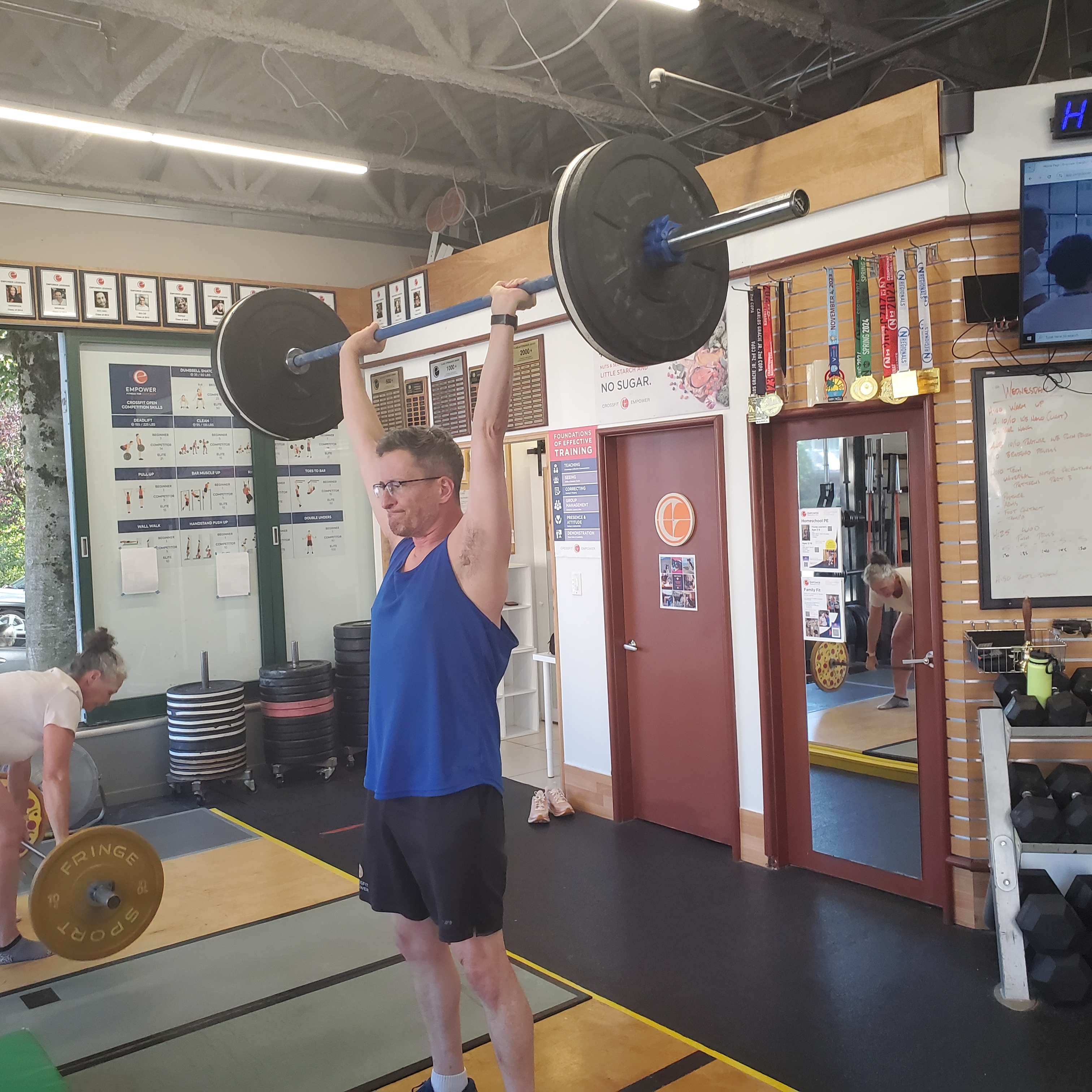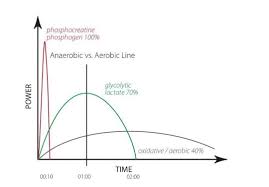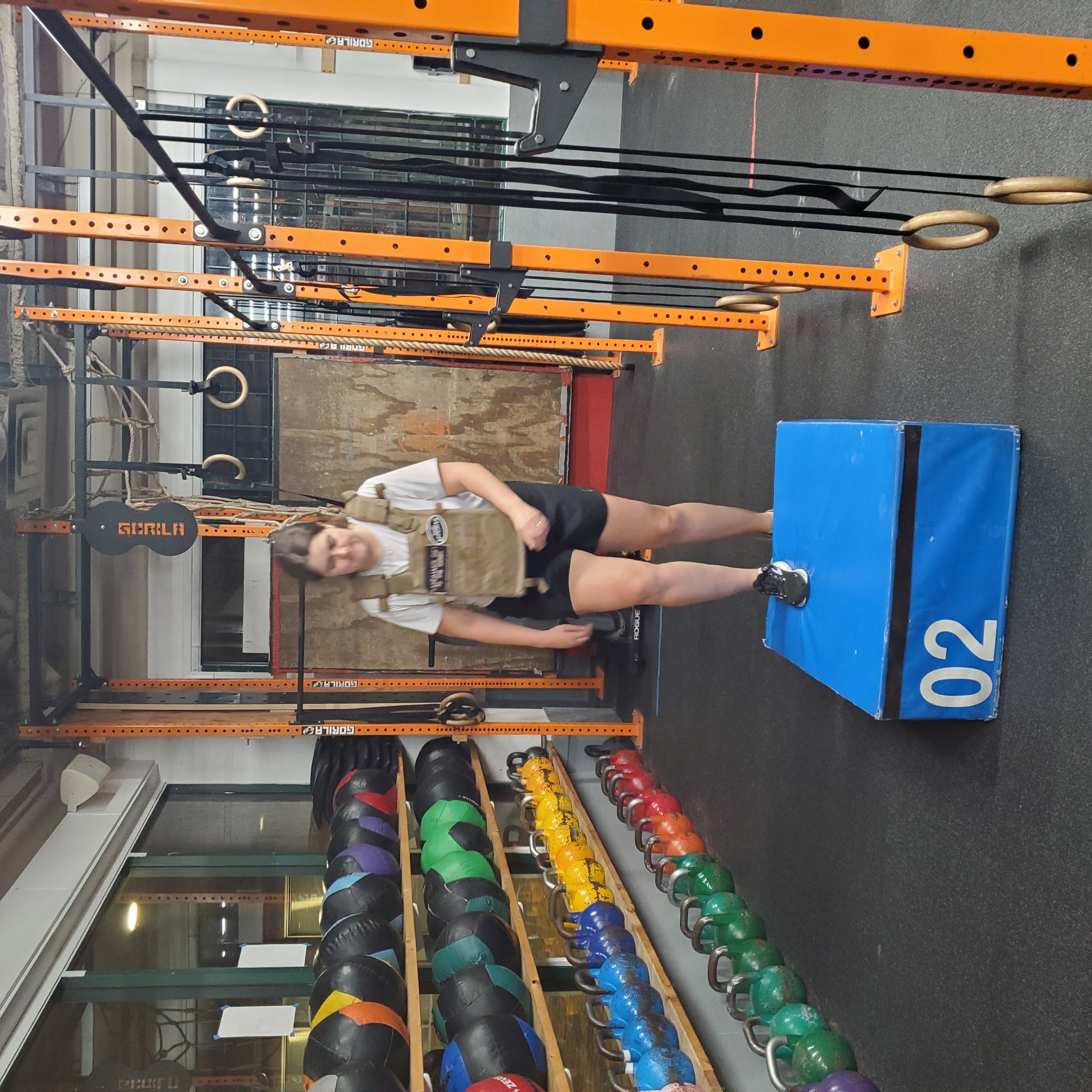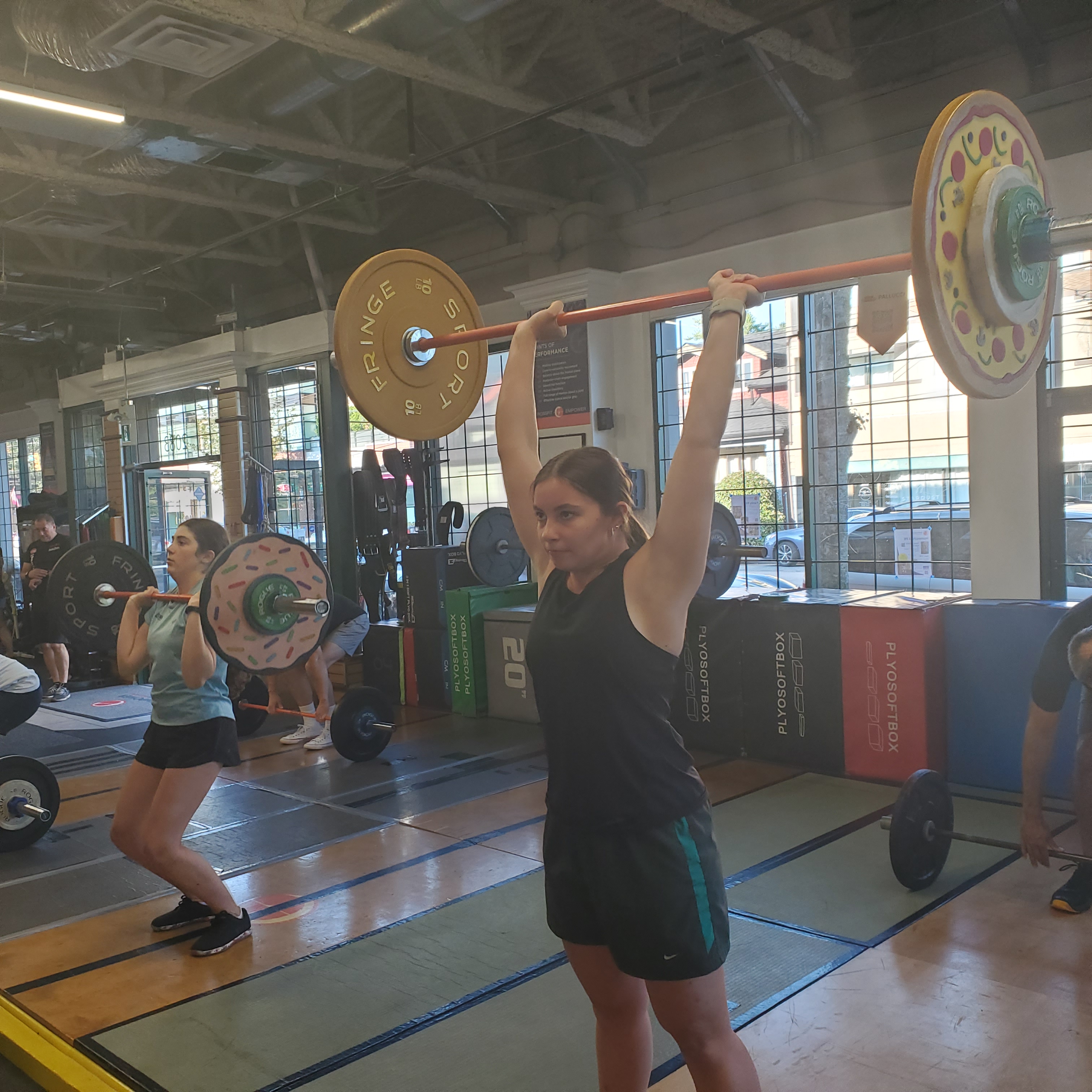
Understanding Energy Pathways:Your Key to CrossFit Success
Saturday Big Cat coached a very good workout that consisted of 5 x 2 minute rounds of 20/25 calories on the airbike followed by max reps of deadlifts at 205/275 lbs with a 4 minute rest between rounds.

I witnessed my classmates work very hard and get destroyed on this workout and realized that many people do not understand how to pace different workouts. In competition I see this all the time. In fact, part of my competition strategy depends upon competitors screwing up their pacing and falling apart once we hit deep water in the workout.

Here’s a brief, simplified breakdown of your energy pathways and how to use them in a workout like Saturday’s to optimize your outcomes.

1. ATP (Adenosine Triphosphate) aka Anaerobic Alactic
Power: High
Duration: 10-30 seconds
Recovery: 30-90 seconds
ATP refers to the energy stored in your muscle cells in the form of Adenosine Triphosphate. It is the energy pathway that produces the most power. It is your first line of defense when danger arrives allowing you to sprint away or to exert maximal force. Because it is already in the muscle cells, it is ready to go at a moment’s notice. But your muscle cells have a very limited storage capacity. Elite athletes will have up to a maximum of 30 seconds worth of ATP available. I have about 20 seconds worth. Recently HWPO programmed a WOD testing your ATP using watts on the rower or airbike. Jump on, try hitting and holding your top speed. Sometime between 10 and 30 seconds you will find you are unable to sustain your top power output (as measured in watts). You will not be able to hit max watts again without a rest. How long? Your body replenishes ATP at a 1:3 work to recovery ratio so, if you sustain a full burst of effort for 10 seconds, you will require 30 seconds to recover. An elite athlete going a full 30 seconds at maximal power output will require 90 seconds recovery. These physiological parameters are immutable and with some minor variance between individuals, universal. While you can increase your ATP energy pathway with training, human beings top out around 30 seconds.
2. Glycolytic aka Anaerobic Lactic
Power: Medium
Duration: 30-120 seconds
Recovery: 60-240 seconds
Your second energy pathway refers to the glycogen carried in your bloodstream at any given time. It is less powerful and takes a moment to kick in as it must be transported from your bloodstream to the muscles and there converted to ATP. An elite athlete can sustain this energy pathway for up to 2 minutes. I personally top out at between 70 to 80 seconds. You can also test this by trying to hold peak power output on a rower or airbike. There will be a point between 40 to 120 seconds when your power output as measured in watts takes a dramatic nosedive. You are constrained by your body’s ability to carry glycogen (sugar) in the bloodstream. Too much blood sugar is toxic. Ergo, your capacity must be limited for safety. The recovery rate for the glycolytic energy pathway is 1:2 so, for every minute of work in this energy pathway, you will require 2 minutes recovery before you can replicate your power output. If you are elite and can sustain 2 minutes of work in the glycolytic energy pathway, you will require 4 minutes recovery. If you look again at Saturday’s workout, you may be getting a clue. When you have used up available glycogen, your body will draw sugars from storage in the fat cells to replenish it. The catch is, this process requires oxygen.
3. Aerobic
Power: Low
Duration: 2 minutes and beyond
Recovery: 1:1
The first two energy pathways are called anaerobic because they do not require oxygen to produce power. But once you have depleted your available ATP and glycogen stores, you will need oxygen (aerobic) to utilize the energy stored in your fat cells. This process is now limited by your respiratory system’s ability to utilize and deliver the air you are breathing. Beyond 2 minutes effort, by necessity, your workrate will be limited by your ability to breathe. Your aerobic power output is much lower than the first two energy pathways but it is in effect limitless. As long as your work intensity does not surpass your rate of breathing (what we in CrossFit refer to as redlining), you can continue for hours. Your aerobic energy pathway is by definition, sustainable. Even a very lean person has enough fat to fuel days of aerobic effort.

Understanding these energy pathways informs us of the intent behind Saturday’s workout. Two minutes of work followed by 4 minutes rest is the 1:2 work to rest ratio required to train the glycolytic energy pathway of elite athletes. Work hard for 2 minutes, recover for 4. The top CrossFitters have the capacity to remain in the anaerobic lactic energy pathway for 2 minutes. They can easily complete 20/25 calories within the time parameters without needing to dip into the ATP energy pathway for a full-on sprint. And they can perform deadlift reps at 205/275 lbs relatively easily as these are somewhere in the range of 60-70% of their one rep maxes. The strategy for an elite CrossFit athlete would be to hit the Echo bike at about 70% effort then use the remaining time to accumulate a high volume of deadlifts.

Unfortunately, this approach will not work for you and I because we are not elite. 275 lbs represents a lot more than 70% of my deadlift one rep max. For a deadlift this heavy, I need to access my ATP energy pathway. And 25 calories on the airbike at my 70% effort would take the full two minutes. To complete the calories in a reasonable time I will also have to access my ATP energy pathway. Also, as previously mentioned, my glycolytic energy pathway is good only for 70 or 80 seconds, I cannot sustain that work rate for the full 2 minutes without redlining.

So, I had to come up with a different strategy. Here’s how I did it:
I sprinted the first 20 seconds (ATP) holding a power output of over 80 watts. This netted me 13 calories. As soon as my power output began to drop around the 20 second mark, I eased back to 70+ watts for 10 seconds or so, then retreated to 60+ watts until the 1 minute mark. At that point, with 5 calories remaining, I slowed right down. Basically, I sprinted 20 seconds then recovered for 60 seconds (1:3 work to recovery ratio for ATP). At one minute, twenty seconds, I hit my 25 calorie target, climbed off the bike, reset my monitor, chalked my hands and approached my barbell. Getting my breathing under control, I postured up, braced and at one minute, thirty eight seconds, I began my deadlift set.

In round one I was conservative because I do not love performing deadlifts while fatigued. Also, my low back was very inflamed after a week of high stress and poor sleep (the two factors that correlate most strongly with my back pain - Thursday morning I could barely walk to work, the inflammation was so bad. Sunghee had to keep stopping to wait for me to catch up!)

Side Bar:
One thing no one ever discusses about deadlifts is that a heavy deadlift done with good form can actually be the best reset for your lower back. I have corrected my own back pain on many occasions this way. It won’t work with light loads, but a heavy deadlift, done well, can help correct postural misalignments and relieve pain. Every movement in CrossFit is a potential rehab movement. That was certainly the case for me. In round one I was conservative and only did 5 deadlifts not wanting to max out and not trusting my recovery between rounds. But in round 2 I had enough time and strength so I completed 6. Now that I was warmer and feeling more confident, I set a goal to improve each round. I was able to do 7 deadlifts in round 3 then 8 in round 4. In round 5 I went for it and completed 10. Sunday morning my back felt good as new!

Analyzing my pacing it looked like this:
20 seconds Echo Bike Max effort (ATP)
60 seconds Echo Bike recovery pace (aerobic)
18 second transition
22 seconds Deadlift Max Effort (ATP)
4 minute rest

CrossFit offers us a constantly varied training stimulus, each workout testing and training us in different ways. Understanding the science underlying our physiological capacity helps us as athletes get our best performance in any given workout. Recognizing our own strengths and weaknesses is also very useful in determining how we approach each workout. If I had tried to do Saturday’s workout the way a CrossFit Games athlete would approach it, I would have had a very different (much poorer) outcome. But because I knew my capacity and the work to recovery ratios, I could quickly devise a plan that would allow me to sustain or improve my work rate round after round (believe it or not, I came up with this pacing strategy on the fly only after I had started round 1).

Try it for yourself next time, instead of throwing yourself at the workout and praying you survive, try devising a pacing strategy that optimizes your energy pathways. If you’re not sure, ask me, I’d love to help. And don’t worry if you get it wrong. I often change from plan A to plan B to plan C mid-workout. It’s through trial and error that we learn our pacing and refine our ability to accurately predict the workout’s physiological impact. The fun is in the learning!

Monday
Warm Up
3 Rounds (1 min each):
A. Air Bike
B. Skipping
C. Hurdles
Tech
Airbike Sprint test:
What if your top power output (in watts) and how long can you sustain it before your power output declines?
WOD
4 Rounds
15 Box Jumps
400m Run
